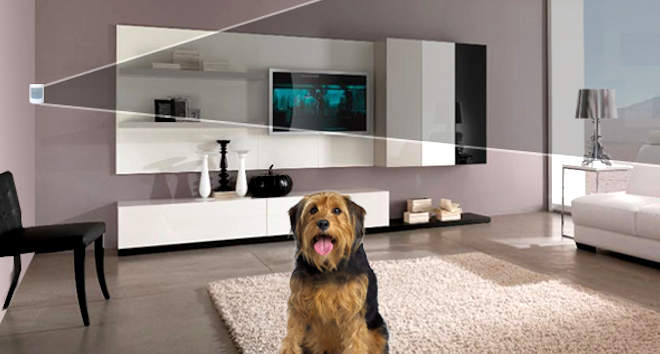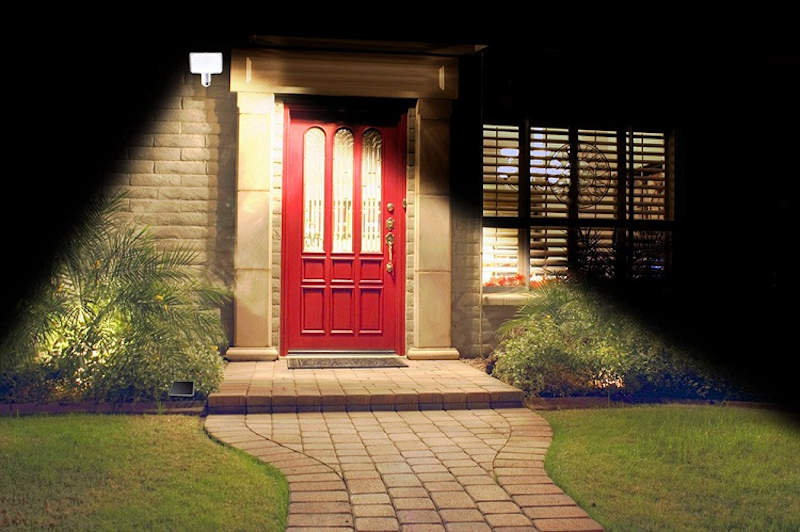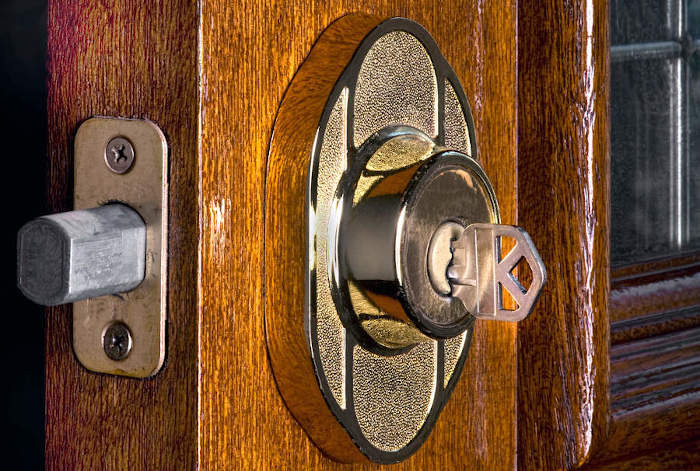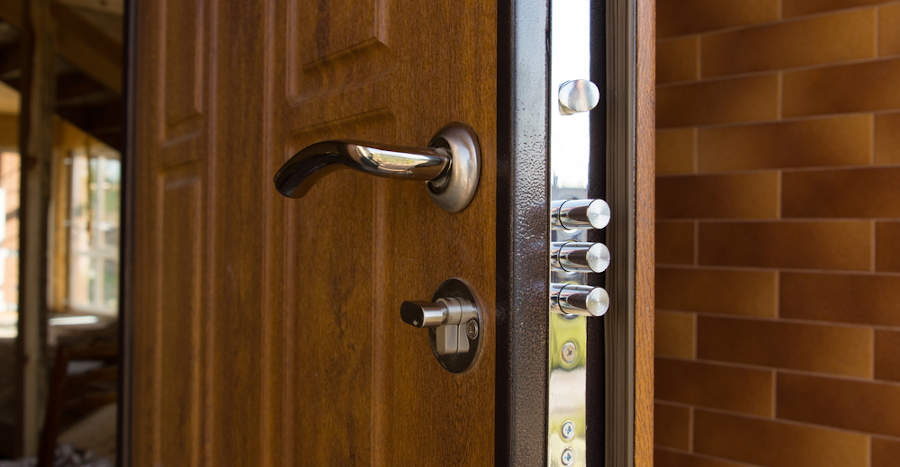
Introduction to motion detectors for Nashville home security
Introduction to motion detectors, motion-sensing tech for home security in Nashville
Depending on how you classify the different kinds of motion detectors, there are four or five distinct types or categories of motion-sensing technology available for your home security setup in Nashville and beyond. Each class of motion detector/sensor comes with its own pros and cons/ positives and negatives.
The main types of motion sensors include passive infrared/PIR, ultrasonic, microwave, tomographic, and dual/combo types.
Passive InfraRed (PIR) motion sensors
Today the most common type of motion sensors by a long shot, the passive infrared/PIR sensor detects body heat and movement with the creation of a protective grid. Any moving objects block a number of grid zones triggering the alarm. A PIR motion sensor sets off the alarm when this specific influx of electricity occurs.
The primary advantages of PIR sensors are their relatively low cost, minimal energy usage, and potential to last a very long time with proper care. PIR sensors are extremely common in indoor alarms.
PIR motion sensors contain a thin film of pyroelectric material, which works by reacting to infrared radiation by generating electricity.
The passive infrared/PIR motion sensor works by seeking changes in infrared energy. When the PIR sensor first activates, it will measure and take note of the current level of infrared energy in the area it is set up to monitor. If a significant new solid mass enters the view or detection area of its sensor, the resulting sharp change in detected infrared energy will be noticed, causing the PIR motion sensor to activate.
The sensitivity of the PIR sensor can be adjusted on most models by increasing or decreasing its pulse count. The higher the pulse count, the less sensitive the PIR sensor; alternately, lowering the pulse count will cause the PIR sensor to respond more easily (in other words, increasing the sensitivity).
Passive infrared (PIR) motion sensors notice the skin temperature of people and animals via the emitted black-body radiation at mid-infrared wavelengths, in contrast to background objects at room temperature. No energy is emitted from the sensor, thus the name passive infrared. This distinguishes it from the so-called electric eye, for instance (actually a photoresistor or photocell – not considered a motion detector), in which the crossing of a person or vehicle interrupts a visible or infrared beam. These devices can detect objects, people, or animals by picking up one’s infrared radiation.
Ultrasonic motion sensors
In ultrasonic motion sensors, ultra-high frequencies of sound are rapidly pulsed from the device. If these sound waves are bounced back by any moving object, it trips the sensor and activates the lighting.
Ultrasonic sensors can be active or passive.
Active ultrasonic sensors emit pulses of ultrasonic wave (sound waves pitched higher than humans can hear) and then measure the reflection of the waves off a moving object. Please note that dogs, cats, and even some fish can actually hear these ultrasonic frequencies, so an active ultrasonic alarm may unsettle them. This is an important factor to keep in mind when choosing the specific type(s) of motion sensors to use in your home security scheme.
Ultrasonic motion sensors on Amazon
Passive ultrasonic sensors listen for very specific types of sounds, like glass breaking or metal on metal. These are very sensitive, but the downside to this is that they can be rather expensive and can also tend to generate false alarms.
A closer examination reveals three main categories of passive ultrasonic motion detectors/ sensors.
Three (3) main categories of passive ultrasonic motion sensors
Specifically, there are three main categories of passive ultrasonic motion sensors. (This does tend to get a little technical, but you can always Google for more information on the specifics.)
- Time of flight (ToF) sensor (for sensing distance)
- Doppler (effect) shift sensor (for sensing velocity/speed)
- Amplitude attenuation (for sensing distance, directionality, or acoustic attenuation coefficient)
Microwave motion sensors
Microwave motion sensors emit microwave pulses and then measure their reflection off of objects, in order to tell whether or not those objects are moving. These are also very sensitive, but they can sometimes “see through” nonmetallic objects and so might detect moving things outside of the target range. They also use a lot of power, so sensors are often designed to cycle on and off. This makes it possible to get past them, if you know the cycles. Electronic guard dogs use microwave sensors.
Microwave motion sensors on Amazon
Tomographic motion sensors
Tomographic motion detectors/sensors emit radio waves and are able to detect disturbances in radio waves. Tomographic sensors are unique in their ability to operate by “seeing through” solid objects like walls, doors, furniture, and other objects. These motion sensors are often positioned in such a way as to create a relatively wide radio wave net or detection area. As such, tomographic motion detectors can be configured to safely and accurately monitor comparably large areas.
Tomographic motion sensors on Amazon
Tomographic sensors are relatively expensive, which tends to restrict their use to warehouses, rental storage units, and other business security scenarios that demand a higher-end, commercial level of security protection.
Combination or dual motion sensor types
Some motion detectors combine sensor types in an attempt to eliminate or reduce false alarms. As such, combination motion sensors aka dual motion sensors are triggered only when both sensor types detect motion. Both sensor types must be triggered in order for a combination or dual sensor alarm to be activated. This is am important distinction.
Dual motion sensor lights on Amazon
For example, a dual PIR/microwave sensor will initiate on its PIR setting since this setting requires less energy. When the PIR sensor is tripped, the microwave portion is activated; then, if the microwave portion of the sensor also gets a hit, then both categories of the dual system have been tripped, and the alarm will sound.
This double trigger is particularly good at preventing false alarms; however, due to the increased complexity of the dual sensor, there’s also a risk of missing certain types of valid scenarios. One must carefully weigh the advantages and drawbacks of each type of sensor used in order to make the best decision on exactly what combination of sensors to use in your overall home security package. As you can imagine, this is but one reason hiring experienced home security professionals is a really good idea.
Further reading: What makes a motion dual-tech? AlarmGrid
Doing your homework
That being said, we at Broderick Builders believe that the most responsible homeowners are those who take the time to educate themselves on these matters. Prior to the 1990s, it was much more difficult and time-consuming for the average homeowner to learn the ins and outs of home security options and features; however, the advent of Google and the Internet makes it possible for anyone to gain about as much knowledge as one desires in just about any discipline known to man. We like to see homeowners take advantage of this in order to make the maximum contributions to one’s own home security configuration. It just makes sense for the homeowner to understand home security – arguably one of the most important features of any modern home.
Tips on implementing motion sensors
Here are a few recommendations and tips for setting up your motion sensors/ motion detectors for maximum performance.
Don’t point motion sensor towards windows (especially close to a window).
Don’t point your indoor motion sensor towards a window. Motion sensors pointed at windows – especially larger windows – can be a cacophony of false alarms in the making. Again, there are pros and cons to the different types of sensors when it comes to windows. For instance, a PIR sensor is not likely to detect a human moving on the other side of the window (through glass), but the sensor could be fooled by car headlights or even sunshine if circumstances are right.
Avoid placing motion sensors in extremely windy or drafty areas.
Don’t put your indoor motion sensor in a particularly drafty place, such as in the path of an HVAC vent. Too much hot or cold air blown onto the sensor has been known to trigger false alarms.
Be wary of potential blind spots & other weaknesses of motion detectors.
Motion sensors actually do have blind spots. For example, PIR motion sensor types sometimes fail to detect an object moving directly towards the sensor, in a straight line. The best way to cover for this possible PIR sensor shortcoming is to perform some testing and create some sensor redundancy if possible by implementing two or more sensors at slightly different angles (e.g., setting them at perpendicular angles). Such a configuration will compensate for the limitations of the single motion sensor.
Dirty sensors can be problematic.
Clean the sensors. Make sure the viewing/sensing port of all outdoor motion sensors remains clean (free of accumulating dust and other particulate matter). Dirt or grime can significantly obstruct the sensing capability and could very well prevent the sensors from doing their job.
Further reading: Motion detector guide – SimpliSafe
Resources: Introduction to motion detectors for Nashville home security
- How Do Motion Sensors Work? Types of Motion Sensors | Arrow.com | Arrow.com
- The Beginner’s Guide to Motion Sensors | SafeWise
- Different Types of Motion Sensors And How They Work
- Motion detector – Wikipedia
- 5 Types of Motion Detectors | Central Alarm Inc.
- Different Types Of Motion Sensors, Working And Application – TypesnUses.com
- 10 Best Motion Sensors of 2020 | Safety.com®
- What is a Motion Sensor? | FierceElectronics
- All About Motion Sensors – Pros, Cons and How They Work
- Motion Sensor / Detector Alarm Systems | Kisi
- Motion Detectors – What You Need To Know | SecurityNerd
- How do motion sensing lights and burglar alarms work? | HowStuffWorks
- Motion Sensors – Home Security Systems – The Home Depot
- Motion Sensors and Detectors – Best Buy
- How Do Motion Sensors Work? | ASecureLife.com
- Motion Detectors: How They Work, How To Choose—& Why You Need One
- How Does an Alarm Motion Sensor Work? | | Crime Prevention
- Motion Detectors for Security Systems: Which Is Best for You?
- Tips to Get the Most of Your Motion Sensors | Home Security Tips & Burglary Prevention by ADT






